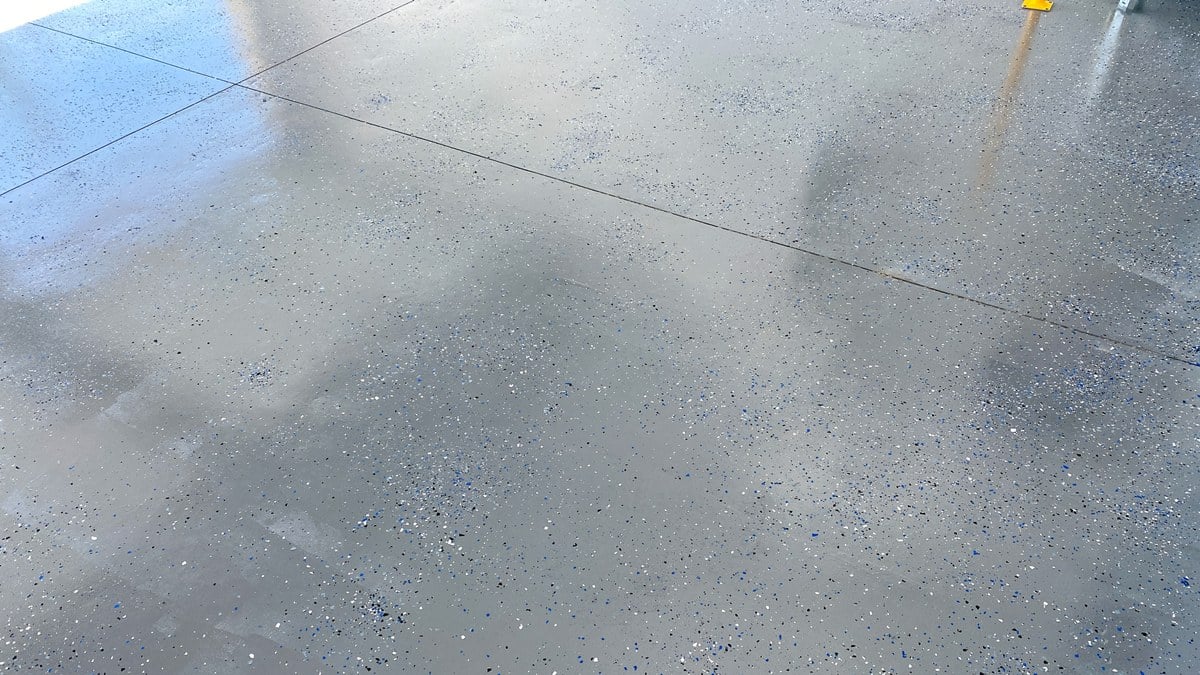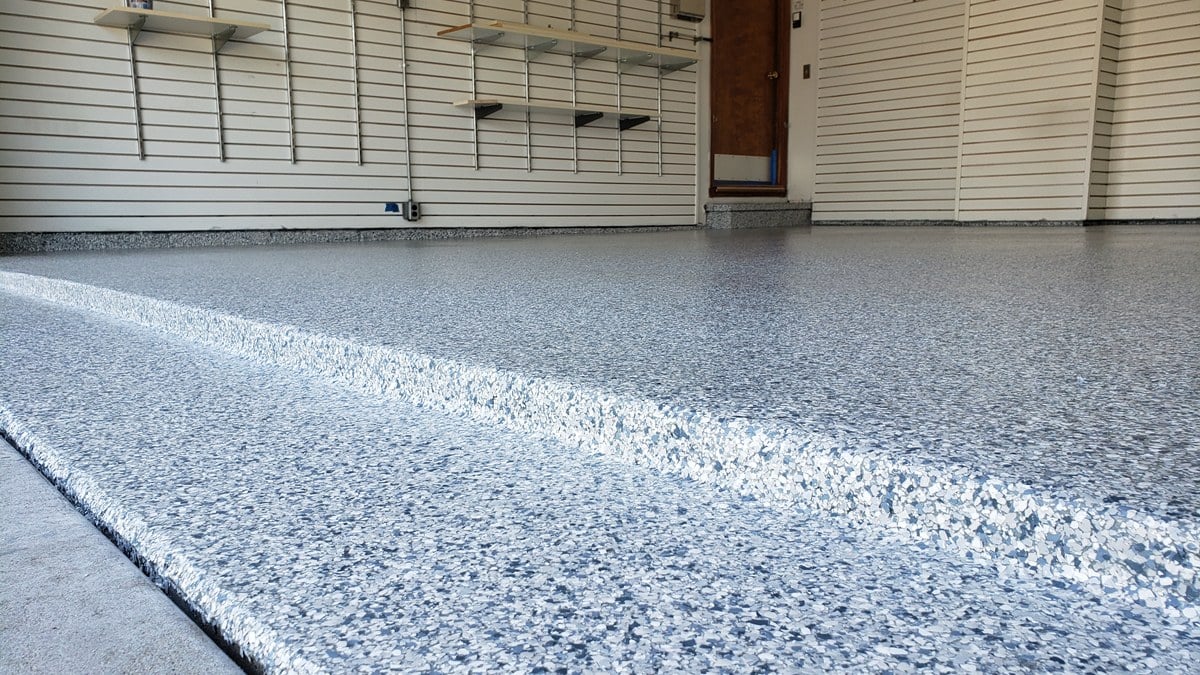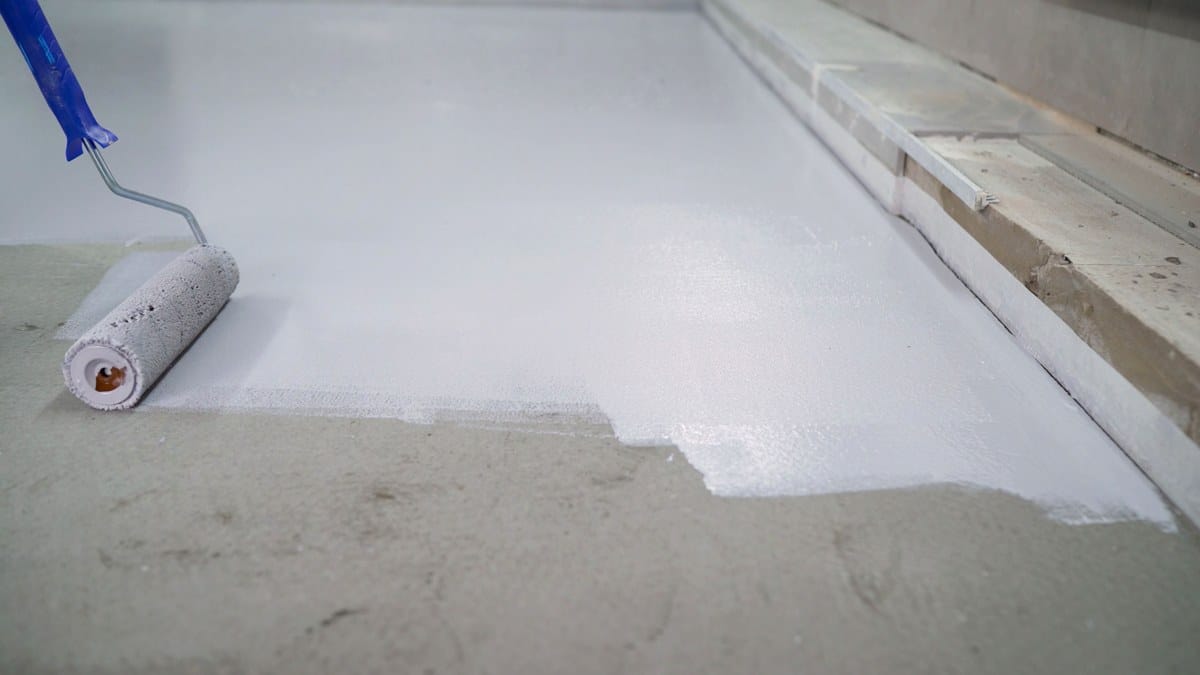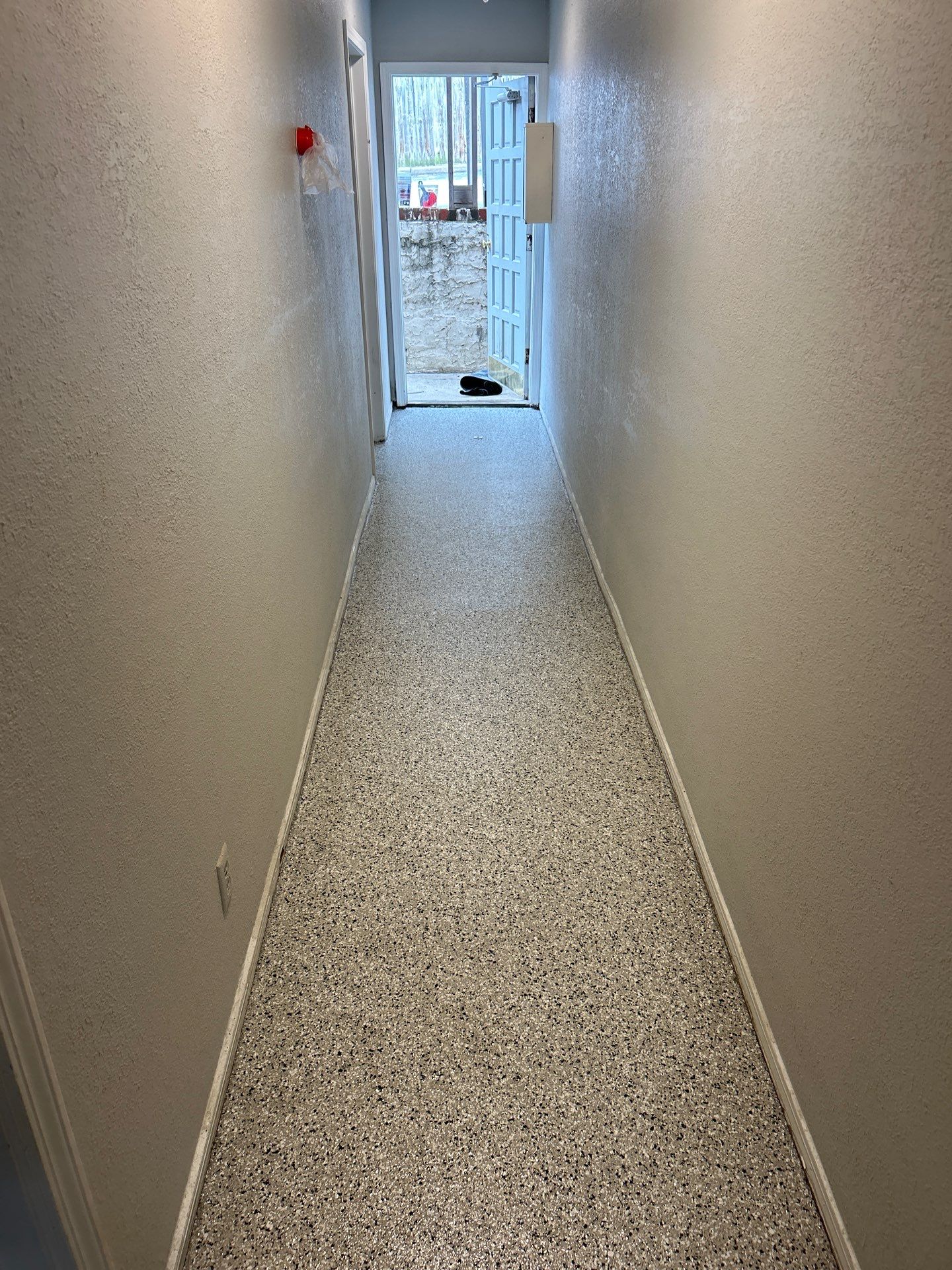When it comes to upgrading your garage, choosing the right floor coating is a crucial decision. A well-coated garage floor not only enhances the look of your space but also provides durability, protection, and ease of maintenance. But with so many options available, how do you know which one is best for your needs? Let’s break down the top three garage floor coating options—epoxy, polyaspartic, and paint—to help you make the best choice.
Key Takeaways:
- Understand durability differences: Learn how epoxy, polyaspartic, and paint compare in terms of longevity and resistance to wear and tear.
- Make an informed decision: Discover which garage floor coating best fits your budget, lifestyle, and maintenance preferences.
- Save time and effort: Get expert maintenance tips to extend the life of your garage floor and keep it looking great.
- Avoid common pitfalls: Identify potential drawbacks of each coating type before committing to an installation.
Epoxy Garage Floor Coating

Pros:
- Highly durable: Epoxy is resistant to stains, chemicals, and heavy impacts, making it an excellent choice for homeowners who use their garage for more than just parking. Whether you store tools, equipment, or work on cars, epoxy provides a sturdy surface that holds up under pressure.
- Aesthetic appeal: Epoxy comes in a variety of colors and finishes, including glossy, metallic, and decorative flakes. It can transform a dull concrete floor into a sleek, professional-looking space that complements your home’s overall design.
- Cost-effective: Compared to polyaspartic coatings, epoxy offers a more budget-friendly solution while still providing good durability and protection. It delivers a high return on investment, especially for homeowners looking for an upgrade without breaking the bank.
Cons:
- Long curing time: Epoxy requires multiple coats and a curing time that can take several days before it is fully ready for use. This may be inconvenient for those who need quick access to their garage.
- Can yellow over time: Exposure to direct sunlight can cause epoxy coatings to fade or develop a yellow tint over time. This can be mitigated by choosing UV-resistant epoxy products or using the coating in shaded or enclosed spaces.
- May crack in extreme temperatures: Epoxy is less flexible than polyaspartic coatings, making it susceptible to cracking in environments that experience significant temperature fluctuations. If your garage is not climate-controlled, this may be a consideration.
Durability Comparison:
Epoxy coatings last 5-10 years with proper maintenance. They resist chemicals well but can develop cracks or chips over time if exposed to extreme temperature changes or heavy impacts.
Maintenance Tips:
- Sweep and mop routinely: Use a soft-bristle broom to remove dirt and debris, and mop with a mild detergent to prevent buildup that could degrade the coating over time.
- Act fast on spills: Oil, chemicals, and other automotive fluids should be wiped up immediately to avoid stains and potential damage to the surface.
- Reapply a topcoat periodically: To keep the epoxy looking fresh and maintain its protective qualities, consider applying a new topcoat every few years, especially in high-traffic areas.
Polyaspartic Garage Floor Coating

Pros:
- Fast curing time: Unlike epoxy, polyaspartic coatings dry within just a few hours, meaning you can use your garage the same day. This makes it a great choice for busy homeowners who can’t afford extended downtime.
- UV resistant: Polyaspartic coatings won’t yellow or fade over time, even with prolonged sun exposure. This makes them ideal for garages with windows or open doors that receive a lot of natural light.
- Superior durability: Polyaspartic coatings are more flexible than epoxy, allowing them to withstand temperature fluctuations without cracking. They also resist chemical spills, heavy impacts, and abrasions better than other coatings.
Cons:
- Higher cost: Polyaspartic coatings are more expensive than epoxy and paint, which can be a drawback for homeowners on a tight budget.
- Requires professional application: Due to its fast drying time, polyaspartic coatings are difficult to apply as a DIY project. Professional installation is recommended to ensure a smooth, even finish.
Durability Comparison:
Polyaspartic coatings can last 10-20 years, making them one of the longest-lasting garage floor options. They withstand heavy traffic, extreme temperatures, and chemical spills better than epoxy.
Maintenance Tips:
- Keep your floor clean with regular sweeping and mopping: Use a microfiber mop or soft-bristle broom to remove dust and dirt, preventing scratches and maintaining a smooth, polished look.
- Choose the right cleaning products: A pH-neutral cleaner is ideal for preserving the integrity of the coating. Harsh chemicals or acidic cleaners can degrade the finish over time.
- Address damage as soon as possible: Small cracks, chips, or peeling areas should be repaired immediately to prevent further deterioration. Prompt attention to minor issues will help prolong the life of your polyaspartic coating and keep your garage floor looking pristine.
Garage Floor Paint

Pros:
- Most affordable option: If you’re looking for a budget-friendly way to improve your garage floor’s appearance, paint is the most cost-effective choice.
- Easy DIY application: Unlike epoxy and polyaspartic coatings, garage floor paint is simple to apply and doesn’t require professional installation. A standard roller and brush are usually enough to get the job done.
- Variety of colors: Available in a range of colors and finishes, garage floor paint allows you to customize the look of your space without a large investment.
Cons:
- Least durable: Paint is prone to chipping, peeling, and staining, especially in high-traffic areas. It does not provide the same level of protection as epoxy or polyaspartic coatings.
- Frequent reapplication needed: Unlike more durable coatings, garage floor paint needs to be reapplied every few years to maintain its appearance.
- Limited chemical resistance: Paint can be easily damaged by oil, gasoline, and other automotive fluids, leading to unsightly stains and deterioration over time.
Durability Comparison:
Painted garage floors typically last 1-3 years before needing a fresh coat. They don’t hold up well against heavy impacts, moisture, or chemical spills.
Maintenance Tips:
- Act quickly on spills: Oil, gasoline, and other liquids can seep into the paint, causing stains and deterioration. Wipe up spills immediately using a cloth and mild detergent to prevent permanent damage.
- Refresh the paint regularly: Due to its lower durability, garage floor paint needs periodic touch-ups or full reapplications every few years to maintain its appearance and protection. Consider using a high-quality exterior paint for better longevity.
- Use protective coverings: Place mats or rugs in high-traffic areas and under vehicles to reduce wear and tear. This helps prevent scuff marks, scratches, and premature peeling of the paint.
Which of These Garage Floor Coating Options is Best for You?
If you want the most affordable and DIY-friendly option, garage floor paint is the way to go, but be prepared for frequent maintenance. For a balance of durability and cost-effectiveness, epoxy is a great choice. However, if you’re looking for the most durable, long-lasting, and low-maintenance solution, polyaspartic coatings are the best investment.
Before making your decision, consider your budget, how much wear and tear your garage floor will endure, and how much maintenance you’re willing to do.
Imagine stepping into a garage with a sleek, durable floor that enhances your space and stands the test of time. At Select Coatings, we help homeowners achieve that vision with the best garage floor coatings. Call us at 913-349-6689 today and let’s bring your dream garage to life!


